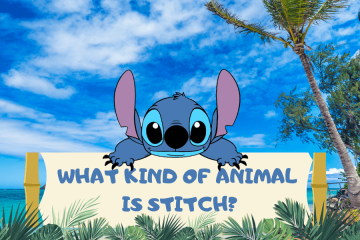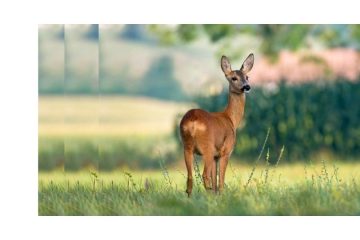Pickachu is a fictional character from the Pokémon franchise. He is a yellow creature that resembles a mouse with red cheeks and ears. let’s face if you are a Pokemon fan then you probably love Pikachu (Who Doesn’t?)
He is an adorable creature that you cannot help but love. There are many different things about Pickachu that you didn’t know but in this article, I am going to answer what kind of animal is Pikachu, lets get to it.
What Kind of Animal Is Pickachu?
In short, Pickachu is a rodent called a pika. Pikas are small mammals that live in the mountains of North America and Canada. They are similar to rabbits but have shorter ears and really short tails.
Although some may argue that Pickachu is a Squirrel (partially true) he is still a pika.
What are Pikas?
Pikas are small mammals that live at high altitudes, such as in the mountains of North America and Canada. They look like a cross between a rabbit and a hamster and have short ears, small tails, and round bodies.
They are related to rabbits, but they can’t jump as far or as high because they don’t have strong hind legs. Their fur is usually brownish-gray in color with white bellies. Their average length is about 7.5 inches (19 centimeters). Most pikas weigh less than 2 pounds (1 kilogram).
Where Do Pikas Live?
Pikas live in mountainous regions throughout North America and Canada. They like rocky areas with lots of vegetation, where they can hide from predators and find food. They prefer high altitudes and can be found up to 13,000 feet (3,962 meters) above sea level in the Rocky Mountains.
The reason these animals live at such high altitudes is that they have no way to cool themselves down.
They have adapted to a cold environment. They have thick fur coats to keep them warm and strong legs so they can hop quickly up steep mountainsides when threatened by predators.
What Do Pikas Eat?
Pikas are herbivores, which means they eat plants. They primarily eat wildflowers and grasses in the summer and then switch to storing food in the wintertime so they can survive on it when there isn’t any vegetation available. Their favorite foods include alpine sedums, buckwheat, and bluebunch wheatgrass.
A fun fact about Pikas is they store food for winter and colder months by hiding the food and storing it in something called „haypiles” . These haypiles are made up of dried grasses, flowers, and other plants that the pikas find during the summer months.
They then place these foods into a pile and cover them with dirt so they can eat them later on in the winter when there isn’t much to eat outside.
Since Pikas are Generalist herbivores, they will eat almost any type of plant that is available to them. They are also known for being able to survive on very little food. In fact, some people have said that Pikas can survive on just one blade of grass a day! and get most of their water requirements from plants that they eat.
How Long Do Pikas Live?
Pikas are very short-lived animals. In fact, they only live for about 7 years! This is because it takes a long time for them to mature and reach their full size.
So, during the summer months when there is lots of food available outside, their bodies grow quickly so that by the time winter comes around they are ready to survive on what little food they can find in the snow-covered mountain tops.
Can you have pika as a pet?
The answer is no, you can’t have a pika as a pet. This is because they are wild animals and are very difficult to keep in captivity. They also need lots of space to run around in, which isn’t possible if you only have one or two of them in your home! also require certain temperatures and food that is difficult to provide for them.
Pikas are very cute and furry little creatures, which is why many people think they would make great pets — but this isn’t true! They are wild animals and require lots of space in which to run around, so it’s best not to try keeping one as a pet unless you have plenty of room in your home.
https://www.nsf.gov/news/news_summ.jsp?cntn_id=129916
http://naturemappingfoundation.org/natmap/facts/american_pika_k6.html
https://www.biologicaldiversity.org/species/mammals/American_pika/natural_history.html

Lydia King is a huge animal lover and has always been fascinated with learning about the animal kingdom. She enjoys writing about anything animal related from scientific information about rare species to animal references in pop culture.






